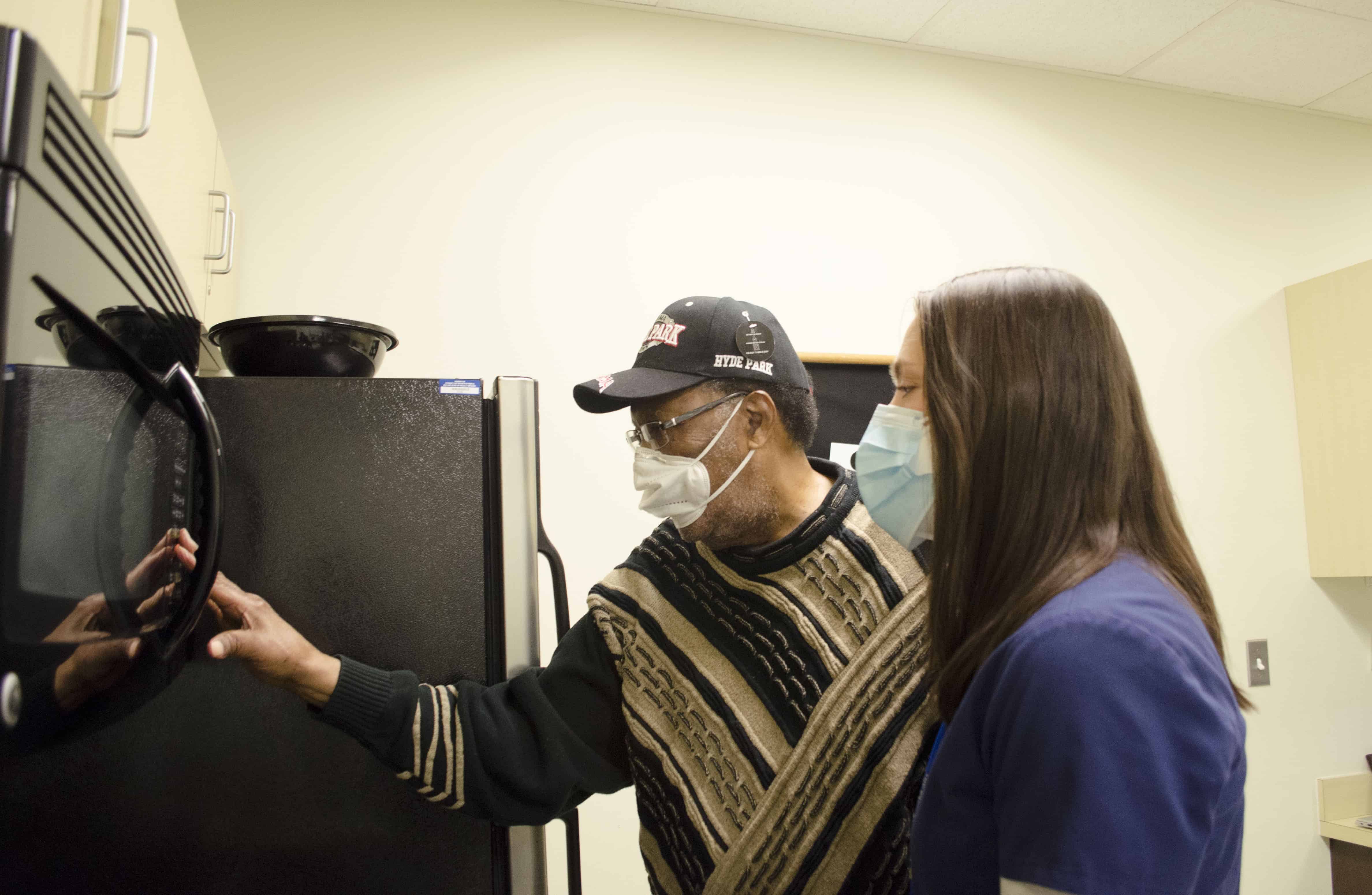Small Adaptations That Make a Big Difference
 Bump dots are small, adhesive bumps that can be stuck to a variety of household items, such as microwaves, in order to tactilely differentiate between buttons and controls for people with vision loss.
Bump dots are small, adhesive bumps that can be stuck to a variety of household items, such as microwaves, in order to tactilely differentiate between buttons and controls for people with vision loss.
As Associate Director of Occupational Therapy at The Chicago Lighthouse, Laura Hayes helps individuals with vision loss work with their remaining vision in everyday settings, including at work and at home. “Occupational therapists are trained to break down a task, such as cooking or cleaning, into smaller components in order to figure out where in the task is that person having difficulty as a result of a disability, illness, or injury,” she says. “We help them make modifications so that they’re able to regain skills and independence in the areas that are important to them.” Many of these modifications can be as minor as using a different pen or choosing a different color toothbrush. However small, these adaptations make a great difference in everyday living. Laura shares a few simple adaptations that individuals with vision loss can make now to function more independently and efficiently.
Use lighting to your advantage
For individuals who are visually impaired, direct lighting that’s focused on whatever task they are trying to do can be tremendously beneficial. “Adjusting use of light is one thing that people can start doing on their own to make their environment easier to navigate,” says Laura. This can be as simple as using a flashlight more often or purchasing a tabletop lamp to help with reading and other tasks. Our Tools for Living Store offers a range of lighting options, including floor, desk, and portable lamps.
Increase contrast around your home
“If someone is having a hard time visually to complete a certain task, I encourage them to take a step back and see if maybe they can fix the contrast in that situation,” says Laura. Cutting a white onion on a white cutting board, pouring coffee into a dark mug, or trying to find a toothbrush that is the same color as the wall behind it are all examples of poor contrast situations. Small tweaks that can be made to improve contrast include using a darker cutting board, using a white mug for coffee, or choosing a bright toothbrush color that can stand out against your walls.
Utilize your other senses to compensate for vision loss
Laura encourages her clients to use their other senses to compensate for vision when completing tasks. Options that are auditory include audiobooks, talking clocks or watches and smart devices such as Alexa that can be used for tasks like checking the weather or setting timers.
Bump dots are a simple, tactile option that utilize touch. These small, adhesive bumps can be stuck to a variety of items, including kitchen appliances, laundry machines, remotes, and thermostats in order to tactilely differentiate between buttons and controls.
Use large print items when possible
Our Tools for Living Store offers a variety of large print items, including measuring cups and spoons, calendars, and address books, for people with low vision. Laura also recommends swapping ballpoint pens for thicker gel or felt pens to improve the visibility of writing.
If you have low vision and are interested in learning whether occupational therapy may be beneficial for you, please contact The Chicago Lighthouse’s Low Vision Clinic to schedule an appointment with one of our optometrists who can consult you. “Our optometrists will take a closer look at your vision and will give recommendations on how we can help you moving forward, and one of those recommendations may be occupational therapy,” says Laura. “So, get really specific as to what those challenging activities are so we can help you to problem-solve and adapt.”

